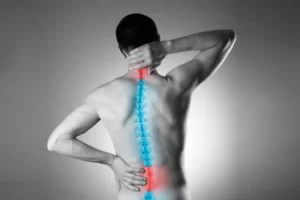 Our office specializes in finding the root cause of people’s chronic pains that won’t go away. Diagnosis of the problem is the beginning of the journey. Then comes all the things that can be done to correct the irritation of tissues, namely spasms in muscles, stiffness of joints, and inflammation of nerves.
Our office specializes in finding the root cause of people’s chronic pains that won’t go away. Diagnosis of the problem is the beginning of the journey. Then comes all the things that can be done to correct the irritation of tissues, namely spasms in muscles, stiffness of joints, and inflammation of nerves.
Not all problems are mechanical, but the majority of back, neck, hip, and shoulder problems are. That means there has been some strain, or stress, on the tissues, either suddenly from a fall or accident or gradually from repetitive strain, posture, or bad habits. Maybe your muscles are too weak or maybe you exercise too hard and you’re not giving them a chance to heal.
Whatever caused the problem, we need to start treatment now from where we are. It is usually too soon to start doing a lot of strengthening exercises. We need to step back and release the tense tissues before overloading them with more work. Makes sense right? If your car needed a tune-up, would it make sense to just work it harder? Of course not.
Releasing tissues is not a new idea but when it is necessary, nothing else will take its place. An old Chiropractor friend of mine used to say, “Not all problems can be fixed with Chiropractic, but if you have a Chiropractic problem, nothing else will help!” You could try drugs, or ice, or heat, or rubs, but most of these things just mask the symptom and reduce the pain, short term.
Tension is the thing to focus on. We look for tension in muscles by feeling where it’s tight, ropey, or knotted. When we find this, there are a variety of treatments that will release the muscle knot or spasm and improve all the related tissues. We look at the joints to see if they are moving well. When the joints are tight, we need to perform some skilled Chiropractic adjustments or manipulation. The purpose is to restore normal mobility and function to the joint, thereby improving the related muscles, joints and nerves around this joint. When the joints are too loose, we must be careful not to aggravate them and look for things around them that are tight, namely nearby joints or muscles. Finally, we look for areas where the nerves are irritated or tense. Here, we often need to adjust the related joints and release the related muscles. Finding which muscle or joints need to be worked on is the skill we only acquire with years of experience.


